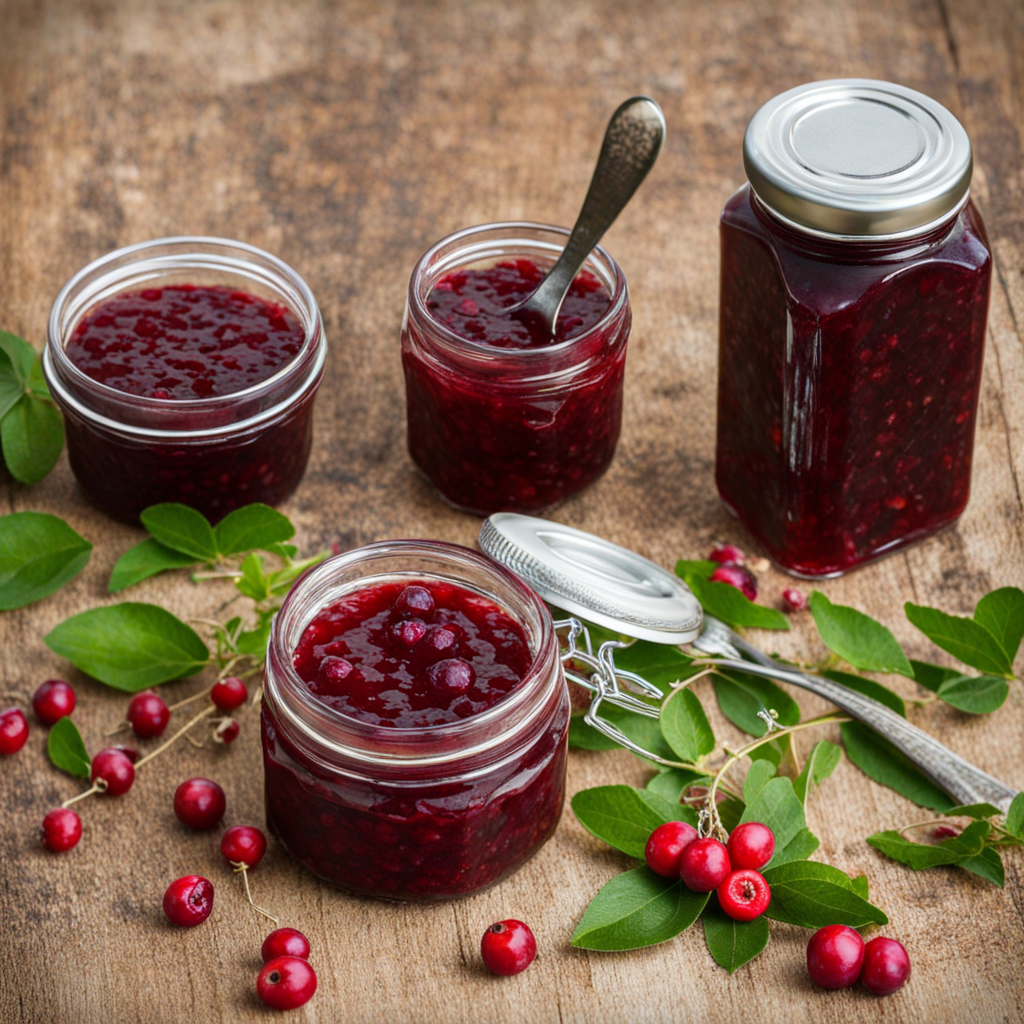Blueberry Pie
Blueberry pie, a delightful dessert from Estonia, captures the essence of summer with its vibrant flavors and simple yet comforting ingredients. The base of this pie features a buttery, flaky crust that cradles a luscious filling made from fresh, plump blueberries. The berries, often foraged from the wild, burst with a sweet-tart flavor that is both refreshing and nostalgic. A touch of sugar and a hint of lemon zest enhance the natural taste of the blueberries, creating a harmonious balance that dances on the palate. As you take a bite, the contrast between the crisp crust and the juicy filling creates a delightful texture experience. The pie is often baked to a perfect golden brown, allowing the aroma of baked berries and warm pastry to fill the air, inviting everyone to indulge. It’s commonly served warm, perhaps with a scoop of vanilla ice cream or a dollop of freshly whipped cream, making it a perfect treat for gatherings or family meals. In Estonia, blueberry pie is not just a dessert; it’s a celebration of local ingredients and culinary traditions. Families often gather to prepare this pie, sharing stories and laughter as they roll out the dough and fill it with berries. The pie is a staple during the blueberry harvest season, reflecting the deep connection Estonians have with their natural landscape. Each slice tells a story of summer days spent in the woods, making blueberry pie a beloved symbol of comfort and community in Estonian cuisine.
How It Became This Dish
Mustikapirukas: A Culinary Journey Through Estonian Heritage Origins of Mustikapirukas Mustikapirukas, a delightful blueberry pie, is a cherished dessert that embodies the essence of Estonian culture and its relationship with the natural landscape. The name "Mustikapirukas" translates to "blueberry pie," with "mustika" meaning "blueberry" and "pirukas" referring to a type of pie or pastry. This traditional dessert has its roots deeply embedded in Estonia’s agricultural history and the rich abundance of wild berries that flourish in its forests. Estonia, a country characterized by its lush forests, pristine lakes, and a temperate climate, has been home to a variety of berries for centuries. Blueberries, in particular, thrive in the wild, and their seasonal availability has made them a staple ingredient in Estonian cuisine. The tradition of foraging for berries is a significant part of Estonian life, reflecting a deep connection to nature and seasonal cycles. Mustikapirukas represents not only a culinary delight but also a celebration of the natural bounty that Estonia offers. Cultural Significance Mustikapirukas is more than just a dessert; it is a symbol of Estonian identity and cultural heritage. In Estonia, food often plays a crucial role in community gatherings, celebrations, and family traditions. The preparation and sharing of Mustikapirukas are typically associated with summer and early autumn when blueberries are at their peak. Families often come together to pick blueberries, and the process of making the pie becomes a communal activity that fosters bonds and passes down traditions from one generation to the next. The pie itself is often served during festive occasions, such as Midsummer (Jaanipäev), weddings, and other celebrations. The vibrant color of the blueberries, combined with the flaky, buttery crust, makes Mustikapirukas a visually appealing centerpiece on any table. The taste of the pie—sweet and slightly tart—evokes the flavors of summer, and eating it is a nostalgic experience for many Estonians, reminding them of childhood summers spent in the countryside. In addition to its role in family and community life, Mustikapirukas holds a special place in Estonia's national identity. As Estonia regained its independence in the early 1990s, there was a resurgence of interest in traditional foods and recipes as a way to celebrate and preserve the country’s cultural heritage. Mustikapirukas, among other traditional dishes, became a symbol of Estonian pride, representing the nation’s connection to its land and natural resources. Development Over Time The evolution of Mustikapirukas can be traced through the interplay of historical events, cultural influences, and changing culinary practices. The earliest iterations of blueberry pies in Estonia likely emerged from simple peasant fare, where foraged berries were combined with basic ingredients like flour, sugar, and butter to create a nourishing and satisfying dish. As with many traditional foods, recipes would have varied from household to household, influenced by regional ingredients, family customs, and available resources. During the 19th century, as Estonia experienced socio-economic changes and increased agricultural development, the use of blueberries in pastries became more widespread. Cookbooks began to emerge, documenting traditional recipes and introducing new techniques. The introduction of puff pastry and other modern baking methods transformed how Mustikapirukas was prepared, leading to variations in texture and flavor. Families began to experiment, incorporating spices like cinnamon or cardamom and adding cream or custard to the filling. The 20th century brought further changes, particularly during the Soviet occupation, when food availability fluctuated. Many traditional dishes, including Mustikapirukas, were adapted to accommodate the scarcity of ingredients. However, the resilience of Estonian culinary traditions allowed Mustikapirukas to endure, often using whatever ingredients were locally available. This adaptability reinforced the importance of the dish as a symbol of Estonian resourcefulness and creativity. As Estonia moved towards independence in the 1990s, there was a renewed interest in traditional foods, with many chefs and home cooks seeking to revive classic recipes. Mustikapirukas was embraced not only as a beloved dessert but also as a way to connect with a shared cultural history. Today, it is often featured in local restaurants and cafes, celebrated for its authenticity and connection to Estonian identity. Modern Interpretations In contemporary Estonia, Mustikapirukas continues to evolve while retaining its traditional roots. Chefs experiment with new flavors and presentations, introducing twists like gluten-free crusts or incorporating other seasonal fruits like raspberries or blackberries. The pie is often served with a dollop of whipped cream or vanilla ice cream, enhancing its appeal to modern palates. The rise of the farm-to-table movement has also encouraged a resurgence in foraging and using local ingredients, making Mustikapirukas a popular choice among those who value sustainability and authenticity in their food. Local food festivals celebrate the berry harvest and showcase Mustikapirukas as a highlight, drawing attention to the importance of preserving traditional recipes while encouraging innovation. Conclusion Mustikapirukas is more than just a delicious dessert; it is a reflection of Estonia’s rich history, cultural identity, and connection to nature. From its humble beginnings as a simple pie made with foraged blueberries to its status as a beloved national dish, Mustikapirukas encapsulates the essence of Estonian life. As it continues to adapt to modern tastes while preserving its traditional roots, Mustikapirukas remains a symbol of resilience, community, and the joy of sharing good food. In every bite, one can taste the stories of generations past and the promise of culinary traditions that will endure for years to come.
You may like
Discover local flavors from Estonia







